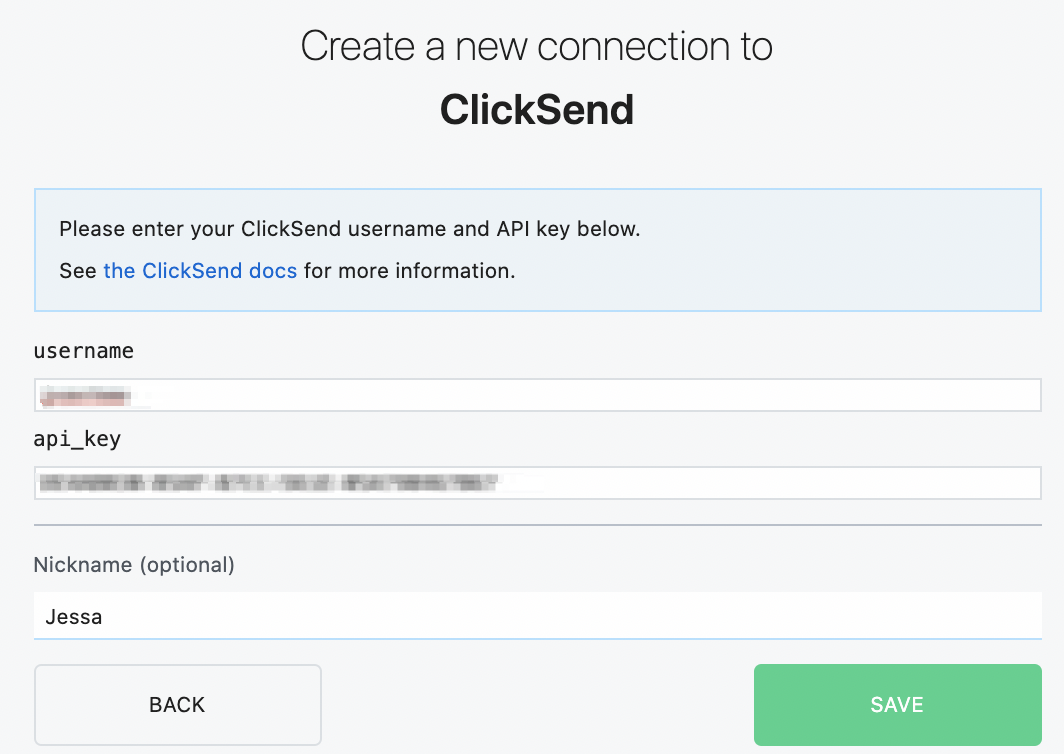What do you want to automate
with ClickSend SMS and AWS?
Prompt, edit and deploy AI agents that connect to ClickSend SMS, AWS and 3,000+ other apps in seconds.
Trusted by 1,000,000+ developers from startups to Fortune 500 companies
Popular ClickSend SMS and AWS Triggers#
Creates a Step Function State Machine to publish a message to an SNS topic at a specific timestamp. The SNS topic delivers the message to this Pipedream source, and the source emits it as a new event.
Emit new event for each new incoming SMS message received. See the documentation
Creates an SNS topic in your AWS account. Messages published to this topic are emitted from the Pipedream source.
The source subscribes to all emails delivered to a specific domain configured in AWS SES. When an email is sent to any address at the domain, this event source emits that email as a formatted event. These events can trigger a Pipedream workflow and can be consumed via SSE or REST API.
Emit new event when a new voice message is received or sent. See the documentation
Popular ClickSend SMS and AWS Actions#
Creates a new contact in a specific list. See the documentation
Sends a new MMS to one or multiple recipients. See the documentation
Sends a new SMS to one or several recipients. See the documentation
Overview of ClickSend SMS#
The ClickSend SMS API unlocks the potential to integrate robust messaging capabilities into your workflows. With Pipedream, you can not only send SMS messages programmatically but also automate notifications, streamline communication based on events, and much more. Whether you're confirming orders, alerting staff, or engaging with customers, ClickSend and Pipedream make these tasks seamless.
Connect ClickSend SMS#
import { axios } from "@pipedream/platform"
export default defineComponent({
props: {
clicksend: {
type: "app",
app: "clicksend",
}
},
async run({steps, $}) {
return await axios($, {
url: `https://rest.clicksend.com/v3/account`,
auth: {
username: `${this.clicksend.$auth.username}`,
password: `${this.clicksend.$auth.api_key}`,
},
})
},
})
Overview of AWS#
The AWS API unlocks endless possibilities for automation with Pipedream. With this powerful combo, you can manage your AWS services and resources, automate deployment workflows, process data, and react to events across your AWS infrastructure. Pipedream offers a serverless platform for creating workflows triggered by various events that can execute AWS SDK functions, making it an efficient tool to integrate, automate, and orchestrate tasks across AWS services and other apps.
Connect AWS#
import AWS from 'aws-sdk'
export default defineComponent({
props: {
aws: {
type: "app",
app: "aws",
}
},
async run({steps, $}) {
const { accessKeyId, secretAccessKey } = this.aws.$auth
/* Now, pass the accessKeyId and secretAccessKey to the constructor for your desired service. For example:
const dynamodb = new AWS.DynamoDB({
accessKeyId,
secretAccessKey,
region: 'us-east-1',
})
*/
},
})Community Posts#

